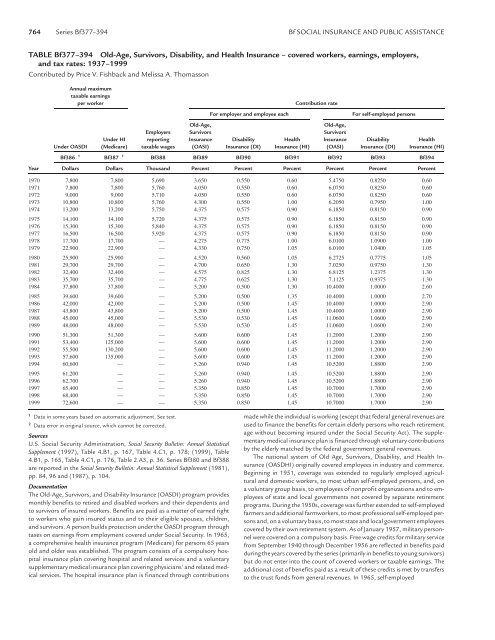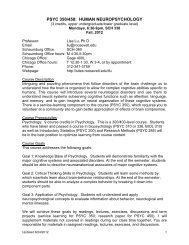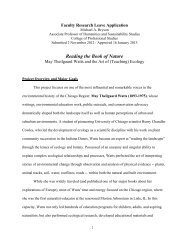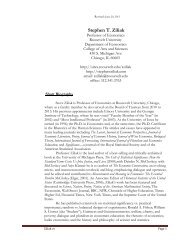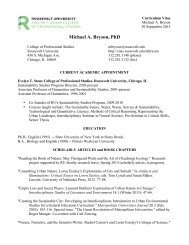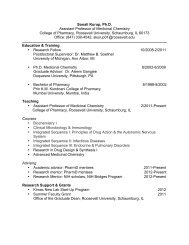Social Insurance and Public Assistance
public-assistance-welfare-reform-colonial-times-to-the-present-ziliak ...
public-assistance-welfare-reform-colonial-times-to-the-present-ziliak ...
You also want an ePaper? Increase the reach of your titles
YUMPU automatically turns print PDFs into web optimized ePapers that Google loves.
764 Series Bf377–394 Bf SOCIAL INSURANCE AND PUBLIC ASSISTANCE<br />
TABLE Bf377–394 Old-Age, Survivors, Disability, <strong>and</strong> Health <strong>Insurance</strong> – covered workers, earnings, employers,<br />
<strong>and</strong> tax rates: 1937–1999<br />
Contributed by Price V. Fishback <strong>and</strong> Melissa A. Thomasson<br />
Annual maximum<br />
taxable earnings<br />
per worker<br />
For employer <strong>and</strong> employee each<br />
Contribution rate<br />
For self-employed persons<br />
Old-Age,<br />
Old-Age,<br />
Employers Survivors Survivors<br />
Under HI reporting <strong>Insurance</strong> Disability Health <strong>Insurance</strong> Disability Health<br />
Under OASDI (Medicare) taxable wages (OASI) <strong>Insurance</strong> (DI) <strong>Insurance</strong> (HI) (OASI) <strong>Insurance</strong> (DI) <strong>Insurance</strong> (HI)<br />
Bf386 1 Bf387 1 Bf388 Bf389 Bf390 Bf391 Bf392 Bf393 Bf394<br />
Year Dollars Dollars Thous<strong>and</strong> Percent Percent Percent Percent Percent Percent<br />
1970 7,800 7,800 5,690 3.650 0.550 0.60 5.4750 0.8250 0.60<br />
1971 7,800 7,800 5,760 4.050 0.550 0.60 6.0750 0.8250 0.60<br />
1972 9,000 9,000 5,710 4.050 0.550 0.60 6.0750 0.8250 0.60<br />
1973 10,800 10,800 5,760 4.300 0.550 1.00 6.2050 0.7950 1.00<br />
1974 13,200 13,200 5,750 4.375 0.575 0.90 6.1850 0.8150 0.90<br />
1975 14,100 14,100 5,720 4.375 0.575 0.90 6.1850 0.8150 0.90<br />
1976 15,300 15,300 5,840 4.375 0.575 0.90 6.1850 0.8150 0.90<br />
1977 16,500 16,500 5,920 4.375 0.575 0.90 6.1850 0.8150 0.90<br />
1978 17,700 17,700 — 4.275 0.775 1.00 6.0100 1.0900 1.00<br />
1979 22,900 22,900 — 4.330 0.750 1.05 6.0100 1.0400 1.05<br />
1980 25,900 25,900 — 4.520 0.560 1.05 6.2725 0.7775 1.05<br />
1981 29,700 29,700 — 4.700 0.650 1.30 7.0250 0.9750 1.30<br />
1982 32,400 32,400 — 4.575 0.825 1.30 6.8125 1.2375 1.30<br />
1983 35,700 35,700 — 4.775 0.625 1.30 7.1125 0.9375 1.30<br />
1984 37,800 37,800 — 5.200 0.500 1.30 10.4000 1.0000 2.60<br />
1985 39,600 39,600 — 5.200 0.500 1.35 10.4000 1.0000 2.70<br />
1986 42,000 42,000 — 5.200 0.500 1.45 10.4000 1.0000 2.90<br />
1987 43,800 43,800 — 5.200 0.500 1.45 10.4000 1.0000 2.90<br />
1988 45,000 45,000 — 5.530 0.530 1.45 11.0600 1.0600 2.90<br />
1989 48,000 48,000 — 5.530 0.530 1.45 11.0600 1.0600 2.90<br />
1990 51,300 51,300 — 5.600 0.600 1.45 11.2000 1.2000 2.90<br />
1991 53,400 125,000 — 5.600 0.600 1.45 11.2000 1.2000 2.90<br />
1992 55,500 130,200 — 5.600 0.600 1.45 11.2000 1.2000 2.90<br />
1993 57,600 135,000 — 5.600 0.600 1.45 11.2000 1.2000 2.90<br />
1994 60,600 — — 5.260 0.940 1.45 10.5200 1.8800 2.90<br />
1995 61,200 — — 5.260 0.940 1.45 10.5200 1.8800 2.90<br />
1996 62,700 — — 5.260 0.940 1.45 10.5200 1.8800 2.90<br />
1997 65,400 — — 5.350 0.850 1.45 10.7000 1.7000 2.90<br />
1998 68,400 — — 5.350 0.850 1.45 10.7000 1.7000 2.90<br />
1999 72,600 — — 5.350 0.850 1.45 10.7000 1.7000 2.90<br />
1 Data in some years based on automatic adjustment. See text.<br />
2 Data error in original source, which cannot be corrected.<br />
Sources<br />
U.S. <strong>Social</strong> Security Administration, <strong>Social</strong> Security Bulletin: Annual Statistical<br />
Supplement (1997), Table 4.B1, p. 167, Table 4.C1, p. 178; (1999), Table<br />
4.B1, p. 165, Table 4.C1, p. 176, Table 2.A3, p. 36. Series Bf380 <strong>and</strong> Bf388<br />
are reported in the <strong>Social</strong> Security Bulletin: Annual Statistical Supplement (1981),<br />
pp. 84, 96 <strong>and</strong> (1987), p. 104.<br />
Documentation<br />
The Old-Age, Survivors, <strong>and</strong> Disability <strong>Insurance</strong> (OASDI) program provides<br />
monthly benefits to retired <strong>and</strong> disabled workers <strong>and</strong> their dependents <strong>and</strong><br />
to survivors of insured workers. Benefits are paid as a matter of earned right<br />
to workers who gain insured status <strong>and</strong> to their eligible spouses, children,<br />
<strong>and</strong> survivors. A person builds protection under the OASDI program through<br />
taxes on earnings from employment covered under <strong>Social</strong> Security. In 1965,<br />
a comprehensive health insurance program (Medicare) for persons 65 years<br />
old <strong>and</strong> older was established. The program consists of a compulsory hospital<br />
insurance plan covering hospital <strong>and</strong> related services <strong>and</strong> a voluntary<br />
supplementary medical insurance plan covering physicians’ <strong>and</strong> related medical<br />
services. The hospital insurance plan is financed through contributions<br />
made while the individual is working (except that federal general revenues are<br />
used to finance the benefits for certain elderly persons who reach retirement<br />
age without becoming insured under the <strong>Social</strong> Security Act). The supplementary<br />
medical insurance plan is financed through voluntary contributions<br />
by the elderly matched by the federal government general revenues.<br />
The national system of Old Age, Survivors, Disability, <strong>and</strong> Health <strong>Insurance</strong><br />
(OASDHI) originally covered employees in industry <strong>and</strong> commerce.<br />
Beginning in 1951, coverage was extended to regularly employed agricultural<br />
<strong>and</strong> domestic workers, to most urban self-employed persons, <strong>and</strong>, on<br />
a voluntary group basis, to employees of nonprofit organizations <strong>and</strong> to employees<br />
of state <strong>and</strong> local governments not covered by separate retirement<br />
programs. During the 1950s, coverage was further extended to self-employed<br />
farmers <strong>and</strong> additional farmworkers, to most professional self-employed persons<br />
<strong>and</strong>, on a voluntary basis, to most state <strong>and</strong> local government employees<br />
covered by their own retirement system. As of January 1957, military personnel<br />
were covered on a compulsory basis. Free wage credits for military service<br />
from September 1940 through December 1956 are reflected in benefits paid<br />
during the years covered by the series (primarily in benefits to young survivors)<br />
but do not enter into the count of covered workers or taxable earnings. The<br />
additional cost of benefits paid as a result of these credits is met by transfers<br />
to the trust funds from general revenues. In 1965, self-employed


